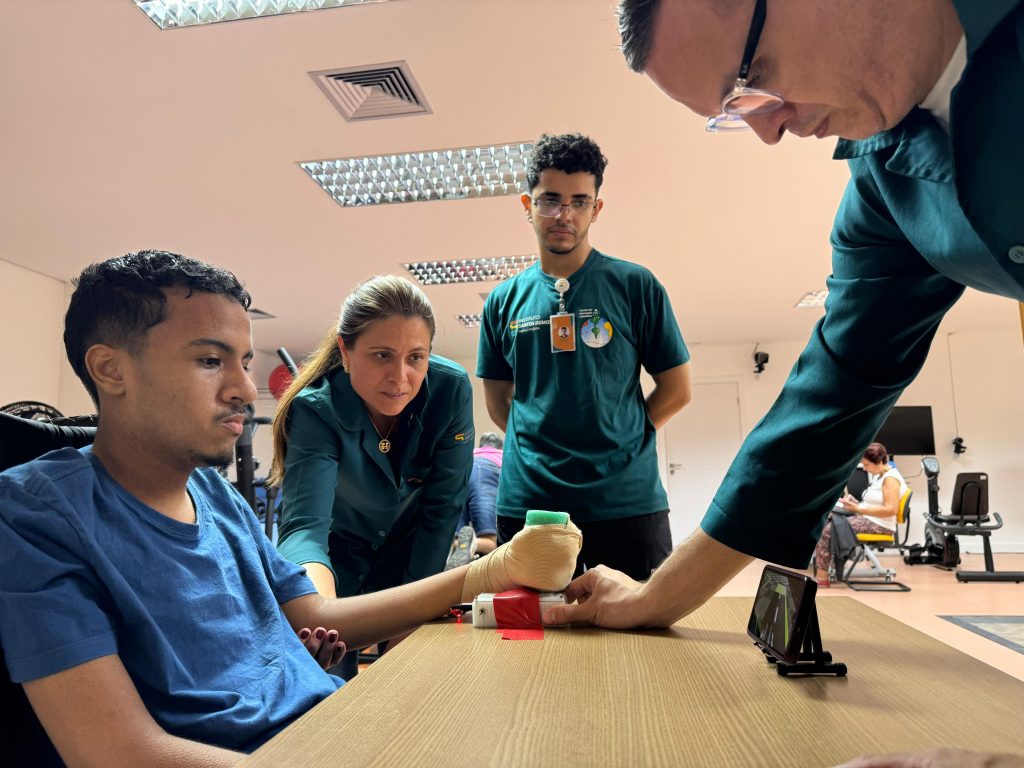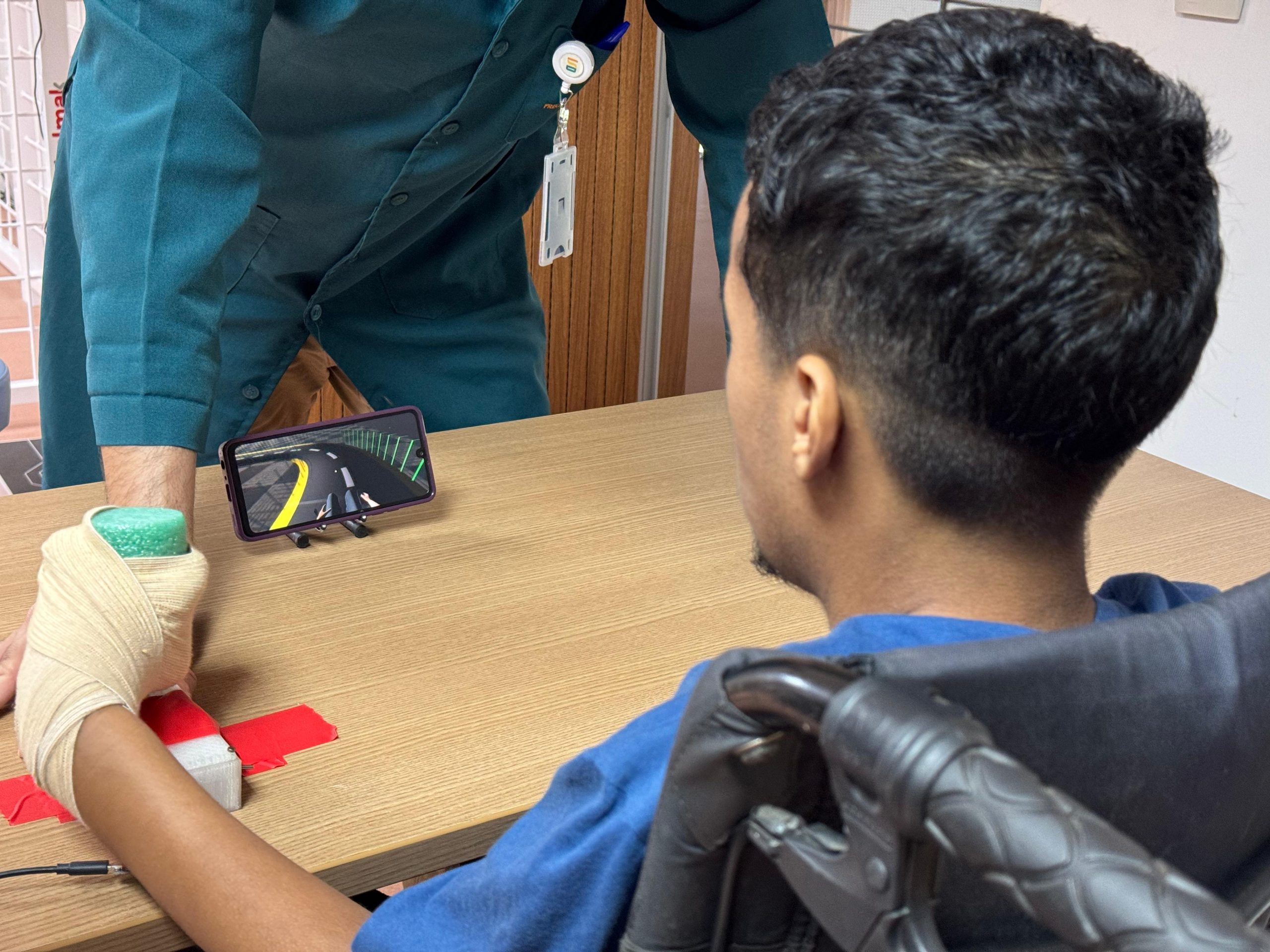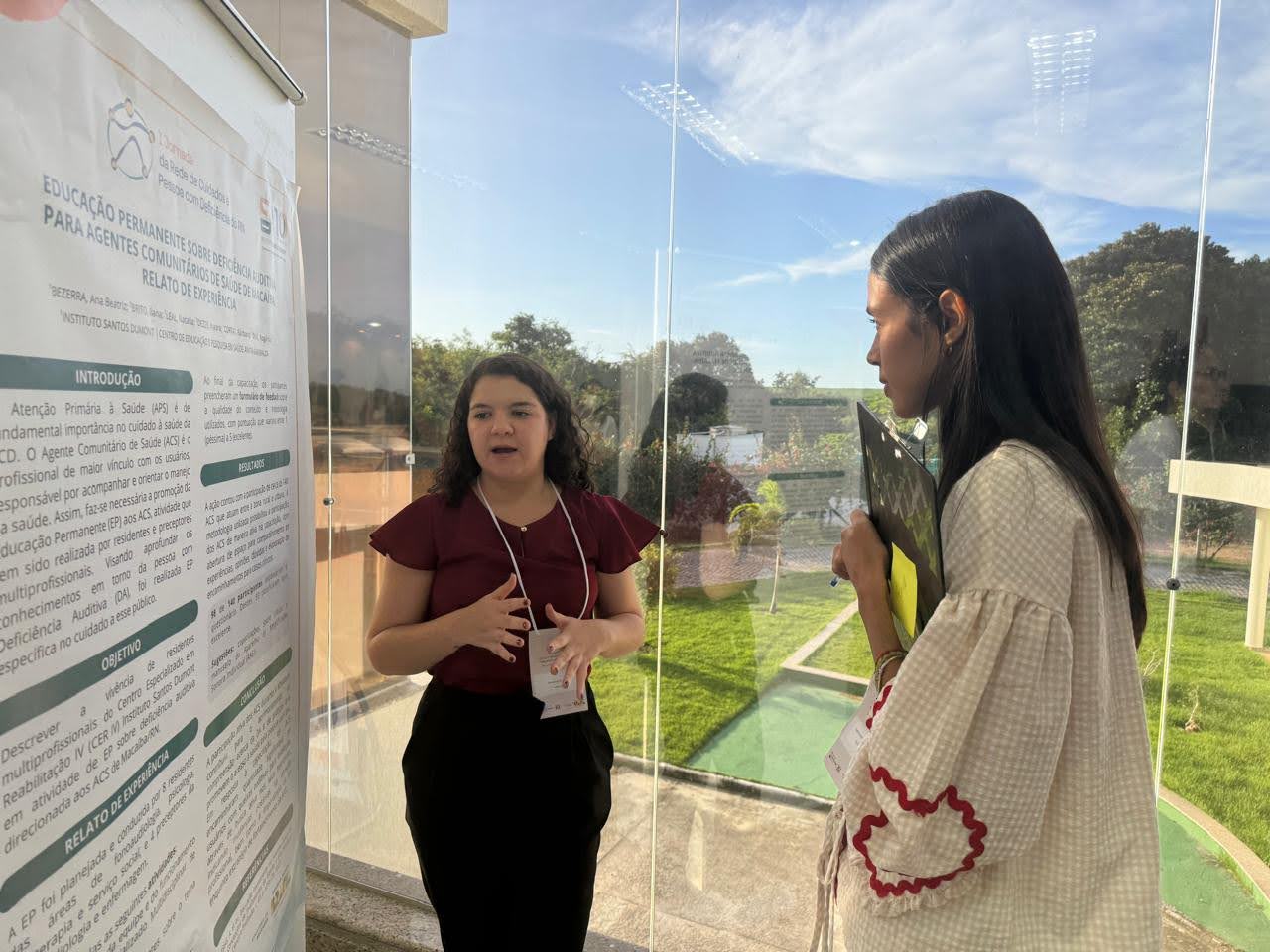Preparing people with spinal cord injuries to use motorized wheelchairs. This is the goal of a virtual game developed by researchers at the Santos Dumont Institute (ISD), in partnership with the Federal University of Rio Grande do Norte (UFRN), which reproduces a virtual obstacle course, where people with tetraplegia can practice controlling the wheelchair by operating an adapted joystick (remote control), equivalent to the electronic device used to move the chair.
Currently in the testing phase, the game aims to facilitate patient adaptation and reduce the risk of accidents caused by the improper use of motorized wheelchairs. Unlike manual wheelchairs, motorized wheelchairs are equipped with electric motors, allowing the user to move without the need to push, and are controlled by means of a remote control, which directs the equipment and also regulates its speed.
“Without adequate knowledge of how this system works, the risk of accidents is greater,” notes ISD physiotherapist preceptor Fabíola Campos, one of the researchers involved in developing the virtual simulator. The professional points out that, in addition to the risks of falls, collisions and loss of control of the device, the lack of adaptation to motorized chairs can discourage patients from using them, rendering them ineffective.
The virtual game was developed by UFRN Biomedical Engineering student Alex Batista, based on a demand from users of the ISD Spinal Cord Injury care line. Alex is a scientific initiation student at the Institute and developed the simulator's interface and programming. He had the collaboration of other ISD researchers and suggestions from patients themselves to improve the gameplay and handling of the device. The game has been undergoing clinical testing for about two months.
“The game has a joystick that simulates wheelchair control. This signal is sent via a microcontroller, via Bluetooth, to the cell phone or computer where the game is running and allows gameplay, with the patient executing commands forward, backward and diagonally. The avatar passes through obstacles on a circuit, with straights and curves. After the game ends, the health professional can observe the time taken to perform the test and if there were any collisions during the course”, explains Alex.

In addition to enabling the patient to be trained to control the motorized wheelchair, “the game has the potential to promote muscle activation in the upper limbs, allowing the patient to achieve other functional activities”, says Fabíola Campos.
José Marinaldo Júnior, 19, is one of the patients taking part in the simulator tests. He lost movement in his upper and lower limbs after suffering a work accident at the end of last year and is on the waiting list of the Unified Health System (SUS) to receive a motorized wheelchair. While he waits for the grant, he is practicing virtual adaptation tests on the simulator with the help of ISD professionals. The intention is for Júnior's adaptation process to the wheelchair to occur safely and in a shorter time.
A researcher in the Postgraduate Program in Physical Education at UFRN and a volunteer researcher at ISD, José Carlos Gomes da Silva also actively participated in the development of the game. He emphasizes the importance of the device in improving the quality of life of patients with spinal cord injuries who need a motorized wheelchair.
“As a healthcare professional, I see it more from the perspective of use, of how this environment can be built, or if there are obstacles, for example. In the computer program, we work in phases: as the patient progresses, the phases become more difficult. In these difficulties, we can manipulate the environment, working based on the patient’s own characteristics,” he says.

Software receives intellectual property registration
Last week, the National Institute of Intellectual Property (INPI) granted the definitive registration of software for the motorized wheelchair simulator. The request for the patent was made in partnership with the Innovation Agency of UFRN (Agir). The registration guarantees intellectual property and proves the authorship of its development before the Judiciary.
The project had the participation of eight researchers during its development process: Alex Batista da Costa, Breno Guilherme de Araújo Tinoco Cabral, Edgard Morya, Fabíola Rodrigues de França Campos, Fabio Ricardo de Oliveira Galvão, José Carlos Gomes da Silva, Luiz Henrique Bertucci Borges and Paulo Moreira Silva Dantas.
Inventors interested in registering computer programs have the option of accessing the Agir's email address, view a step-by-step guide prepared by the Agency team. Additional questions can be answered by calling (84) 99167-6589 or (84) 99224-0076.
About ISD
The Santos Dumont Institute is a Social Organization linked to the Ministry of Education (MEC) and includes the Edmond and Lily Safra International Neuroscience Institute and the Anita Garibaldi Health Education and Research Center, both in Macaíba. ISD's mission is to promote education for life, forming citizens through integrated teaching, research and extension actions, in addition to contributing to a fairer and more humane transformation of Brazilian social reality.















